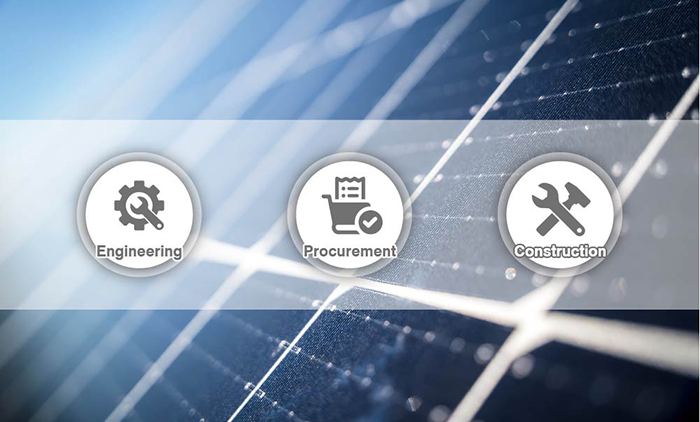EPC, short for Engineering, Procurement, and Construction, refers to a contracting model where a company is entrusted by the owner to manage all phases of a construction project, including design, procurement, construction, and trial operations. Under this model, the contractor is responsible for the quality, safety, cost, and schedule of the project, typically under a lump-sum contract.
In the solar industry, EPC is also known as a "turnkey project." Here, the contractor takes full responsibility for delivering a fully functional and compliant project to the owner. This includes meeting all performance standards (e.g., building, fire safety, seismic, and environmental requirements) and completing inspections, ensuring the project is ready for use and formally handed over.
The EPC model has become a widely adopted method in international engineering projects and a vital approach in the construction of solar projects in China.
Features of the EPC Model
1. Design-Centric Approach
Emphasizing the role of design ensures optimization throughout the project, enhancing overall construction outcomes.
2. Minimized Design Variability During Construction
The integration of design, procurement, and construction ensures adherence to plans, improving efficiency, quality, and cost control.
3. Fixed Budget and Timeline
This model allows clear definitions of responsibilities and obligations, enabling better cost and schedule management while reducing conflicts between owners and contractors.
4. Maximized Resource Utilization
The EPC model integrates technical, managerial, and human resources effectively, driving optimal project efficiency and results.

Common Types of EPC Models
1. Integrated Design, Procurement, and Construction
The contractor handles design, procurement, and construction, delivering the entire project to the owner.
2. Design and Construction Contract
The contractor manages design and construction, while the owner oversees procurement. This is suitable for projects where the design is predefined.
3. Design and Procurement Contract
The contractor is responsible for design and procurement, while another party handles construction. This is ideal for large-scale projects requiring better coordination.
4. Procurement and Construction Contract
The contractor manages procurement and construction, with design handled by a separate entity.
Unique Characteristics of Solar EPC Projects
1. Technical Expertise
Solar projects involve multiple disciplines, including PV modules, inverters, and structural components, requiring advanced technical capabilities.
2. Complex Coordination
Managing design, procurement, and construction requires robust coordination to ensure smooth project execution.
3. Policy Sensitivity
Solar projects are influenced by national policies, such as subsidies and grid connection rules, necessitating a thorough understanding of regulations.
4. Environmental Considerations
Projects must address issues like land use and ecological impact while adhering to sustainability principles.
5. Safety Requirements
As high-voltage installations, solar projects demand stringent safety standards to ensure operational reliability.
Risk Management in Solar EPC Projects
1. Risk Identification
Identify potential risks, including technical, market, policy, environmental, and safety risks.
2. Risk Assessment
Evaluate the probability and impact of each risk to prioritize management efforts.
3. Risk Monitoring
Continuously track risks and adapt to emerging challenges throughout the project lifecycle.
4. Risk Response
Develop strategies such as risk avoidance, mitigation, transfer, or acceptance to address identified risks.
The unique nature of solar EPC projects demands contractors with exceptional technical, managerial, and risk management skills. By continuously improving these capabilities, EPC contractors can deliver high-quality, efficient services, contributing to the sustainable development of the solar industry.








